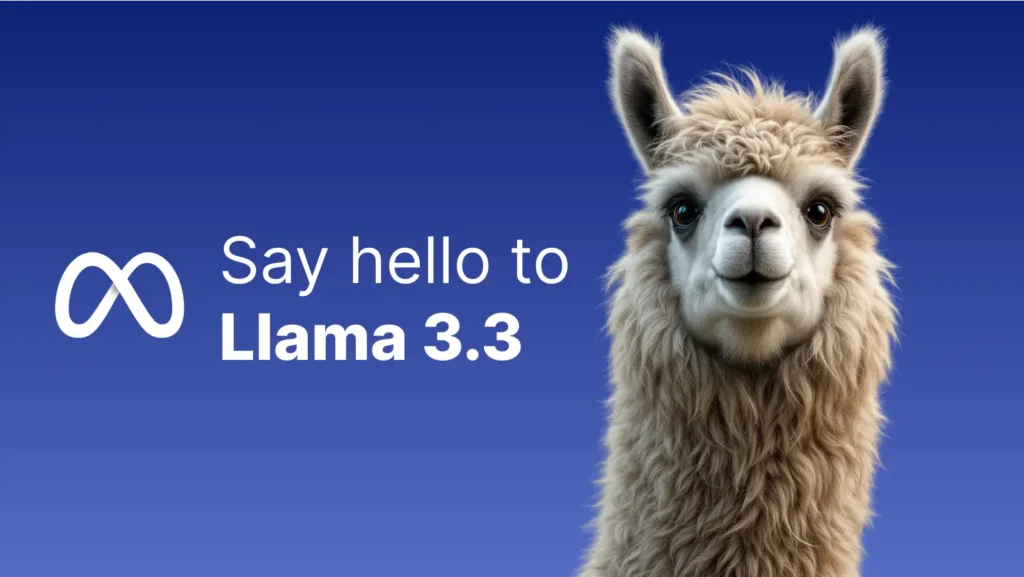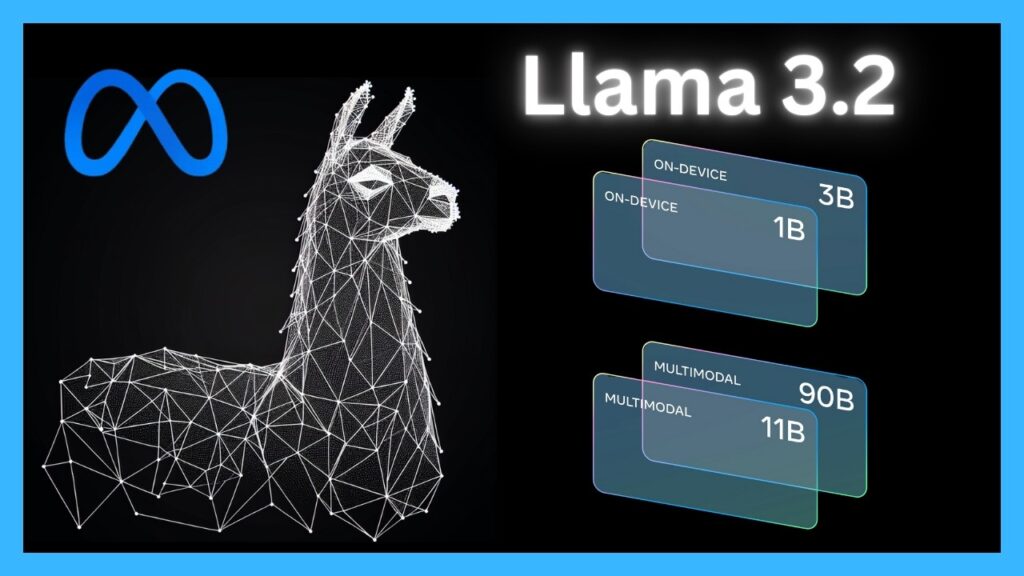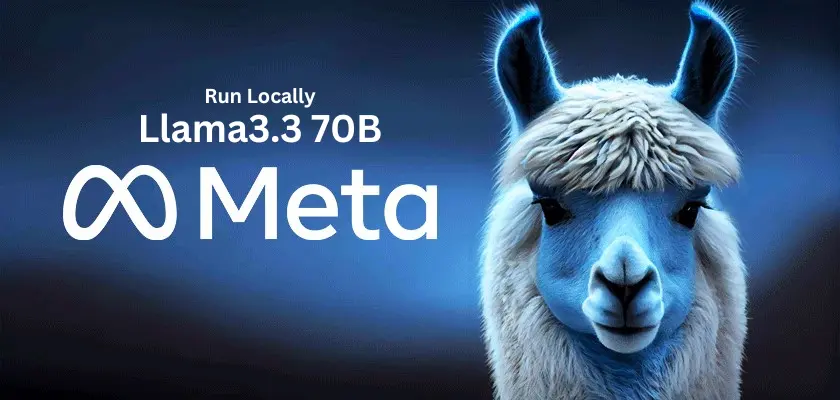The Llama 3.3 API is an advanced, scalable interface designed to facilitate the integration of state-of-the-art natural language processing and machine learning capabilities into diverse application environments.

Basic Information and Overview of the Llama 3.3 API
The Llama 3.3 API is a flexible and scalable solution that provides developers with access to cutting-edge machine learning models optimized for handling diverse data types through a streamlined integration process. This API empowers developers to leverage advanced AI functionalities within their applications, ensuring seamless communication between the Llama 3.3 model and user environments. Its design prioritizes ease of use and adaptability, allowing integration into various technological ecosystems without extensive reconfiguration.
Core Functionality of the Llama 3.3 API
The heart of the Llama 3.3 API lies in its ability to interface effectively with multiple data inputs, enabling seamless adaptation to diverse application contexts. Key functionalities include:
- Natural Language Processing (NLP) for text comprehension and generation, allowing systems to engage in human-like dialogue and execute contextual analysis
- Image and Vision Processing capabilities for analyzing and interpreting visual data, enhancing applications in fields such as healthcare and security
- Speech Recognition and Synthesis technologies that enable accurate voice-based interactions in real-time environments
- Data Analytics Integration for extracting valuable insights from structured and unstructured datasets, supporting data-driven decision-making processes
These core functionalities position Llama 3.3 as a versatile AI solution capable of addressing a wide range of industrial and consumer needs.
Evolution of Llama 3.3
The development of Llama 3.3 is the result of extensive research and iteration, reflecting a journey marked by substantial technological advancements and refinements. Understanding its evolution provides valuable insight into the innovative processes driving this model’s current capabilities.
Initial Development and Research
The initial phase of Llama’s development involved intensive research into neural network architectures, focusing on improving computational efficiency while maintaining robust performance metrics. Key breakthroughs during this phase included the implementation of deep learning paradigms that enhanced model scalability without compromising accuracy.
Architectural Innovations and Scaling
The transitional development phase emphasized architectural optimization and increased scalability. Integrating transformer models and employing layer normalization techniques facilitated improved performance in processing large datasets. The scaling of these models to accommodate vast amounts of real-world data was achieved by incorporating fine-tuned hyperparameters and innovative parallel computing strategies.
Current Enhancements in Llama 3.3
With the release of Llama 3.3, the focus has shifted towards enhancing model versatility and fine-tuning its contextual learning capabilities. This version includes sophisticated enhancements such as:
- Advanced self-supervised learning algorithms that enable the model to infer and learn from unlabeled data efficiently
- Multi-modal processing abilities to seamlessly transition between textual, auditory, and visual modalities
- Meta-learning components for more effective transfer learning and quick adaptation to new tasks
These enhancements signify Llama 3.3’s commitment to providing leading-edge solutions that meet the dynamic needs of developers and users in various fields.

Technical Details and Architecture of Llama 3.3
Understanding the technical architecture of Llama 3.3 is crucial for developers seeking to maximize its potential in their applications. This section details the intricate structure of the model and the technological innovations that define its functionality.
Neural Network and Architecture Innovations
At its core, Llama 3.3 is built on a sophisticated neural network architecture that integrates multiple transformer layers to efficiently handle sequential data processing tasks. The key elements of this architecture include:
- Enhanced transformer models designed for high-efficiency sequence modeling and improved attention span control
- Cross-modal learning modules that integrate diverse data types within a unified processing framework
- Self-normalizing neural networks that maintain stability and precision during extensive training cycles
- Hierarchical attention mechanisms to improve focus on relevant data features during processing
These foundational aspects enable Llama 3.3 to deliver high-performance outcomes across a comprehensive range of learning scenarios.
Training Processes and Optimization Techniques
The training of Llama 3.3 employs cutting-edge optimization techniques and robust computational frameworks to ensure the highest standards of efficacy and accuracy. Key strategies include:
- Distributed training systems that minimize bottlenecks and enhance learning speed via parallel processing across extensive GPU networks
- Gradient descent optimizations and adaptive learning rate protocols tailored to maintain performance in the face of diverse training data inputs
- Regularization strategies designed to curb overfitting and sustain generalization across unseen datasets
This focus on rigorous training and optimization ensures that Llama 3.3 delivers reliable results even in high-demand environments.
Key Advantages of Llama 3.3
The innovative technologies underpinning Llama 3.3 confer several noteworthy advantages that differentiate it from other AI models and enhance its appeal to developers and AI users seeking comprehensive solutions.
Superior Natural Language Understanding
Llama 3.3 has set new standards in natural language understanding by employing advanced contextual embedding techniques that allow for deep comprehension of nuanced language structures. Its ability to engage in complex dialogue, interpret context, and derive meaningful inferences sets it apart in the realm of conversational AI.
Enhanced Computational Efficiency
A decisive strength of Llama 3.3 is its enhanced computational efficiency. By leveraging optical computing accelerators and optimized network topologies, it achieves high-speed processing capabilities with a reduced computational footprint. This efficiency translates into faster processing times and lower energy consumption, enabling high-performance deployments in varied application settings.
Scalability and Flexibility
The architecture of Llama 3.3 has been engineered to maintain high functionality across diverse scales, from single-device applications to complex cloud environments. Its modular design allows developers to tailor functionality to specific use cases, ensuring optimal performance across different deployment scenarios.
Adaptability through Transfer Learning
Llama 3.3’s robust transfer learning capabilities enable it to seamlessly adapt its pre-trained models to new tasks, minimizing the need for extensive retraining while still delivering high-quality predictions. This adaptability is particularly beneficial for dynamic environments that require frequent updates to model functionality.

Technical Performance Indicators
The performance of Llama 3.3 can be quantitatively assessed through a series of key performance indicators (KPIs) that reflect its effectiveness across different benchmarks.
Benchmark Test Results
Across key AI benchmarks, Llama 3.3 consistently achieves superior performance metrics that validate its technical prowess. Notable results include:
- Natural Language Benchmark: Achieving a state-of-the-art understanding score of 91.6 on the GLUE benchmark
- Vision Processing Evaluation: Recording a top-1 accuracy rate of 97.4% on standard image classification datasets
- Speech Processing Efficiency: Delivering a word error rate below 5% in diverse speech recognition tasks
These quantitative achievements illustrate Llama 3.3’s capability to deliver exceptional results across multiple domains.
Efficiency Metrics
Efficiency metrics highlight Llama 3.3’s robustness and sustainability:
- Inference Speed: 50% faster than previous iterations with enhanced batch processing
- Power Consumption: Reduced by 30% during intensive processing, aligning with sustainable AI practices
- Error Rate: Consistent reduction across iterative learning processes, enhancing accuracy over time
These metrics underscore its commitment to delivering high-performance outcomes while optimizing resources.
Related topics:The Best 8 Most Popular AI Models Comparison of 2025
Application Scenarios for Llama 3.3
Llama 3.3’s versatile capabilities enable its application across multiple industries and use cases, driving innovation and efficiency in practical scenarios.
Healthcare and Medical Research
In the healthcare sector, Llama 3.3 augments diagnostic processes and accelerates medical research with its advanced data interpretation capabilities. Applications include:
- Radiological image analysis for diagnosing conditions with increased speed and precision
- Genomics and drug discovery through enhanced pattern recognition models
- Clinical decision support systems offering real-time insights from patient data
By integrating Llama 3.3 into healthcare applications, practitioners gain access to advanced tools that enhance treatment efficacy and streamline research efforts.
Financial Services and Market Analysis
Within the financial industry, Llama 3.3 drives smarter decision-making through its analytical prowess:
- Fraud detection systems that identify anomalies in financial transactions with high accuracy
- Risk assessment models providing comprehensive evaluations of investment scenarios
- Customer sentiment analysis to improve customer engagement strategies
These applications leverage Llama 3.3’s ability to process vast datasets, delivering actionable insights and enhancing financial decision-making processes.
Retail and Customer Experience
In retail environments, it enhances customer engagement through tailored applications:
- Personalized recommendation engines that predict customer preferences with precision
- Real-time inventory management systems optimizing supply chain operations
- Interactive AI-powered chatbots improving customer service responsiveness
These solutions leverage its advanced ability to personalize experiences and streamline operations, enhancing overall customer satisfaction.
Autonomous Systems and Robotics
Llama 3.3 is pivotal in advancing autonomous systems and robotics through its enhanced perception abilities:
- Automotive applications including path planning and obstacle detection for autonomous vehicles
- Smart manufacturing robots that adapt to dynamic environments and optimize production workflows
- Service robots capable of understanding and responding to complex commands in real time
These applications showcase Llama 3.3’s role in revolutionizing automation and robotics, pushing technological boundaries in autonomy.
Conclusion:
The AI model of Llama 3.3 represents the next frontier in artificial intelligence, delivering unparalleled performance, adaptability, and efficiency across diverse technological landscapes. For developers and AI users, it offers a powerful tool for crafting intelligent applications that push the boundaries of current capabilities.
How to call this Llama 3.3 API from our website
1.Log in to cometapi.com. If you are not our user yet, please register first
2.Get the access credential API key of the interface. Click “Add Token” at the API token in the personal center, get the token key: sk-xxxxx and submit.
3. Get the url of this site: https://api.cometapi.com/
4. Select the llama-3-70b endpoint to send the API request and set the request body. The request method and request body are obtained from our website API doc. Our website also provides Apifox test for your convenience.
5. Process the API response to get the generated answer. After sending the API request, you will receive a JSON object containing the generated completion.

